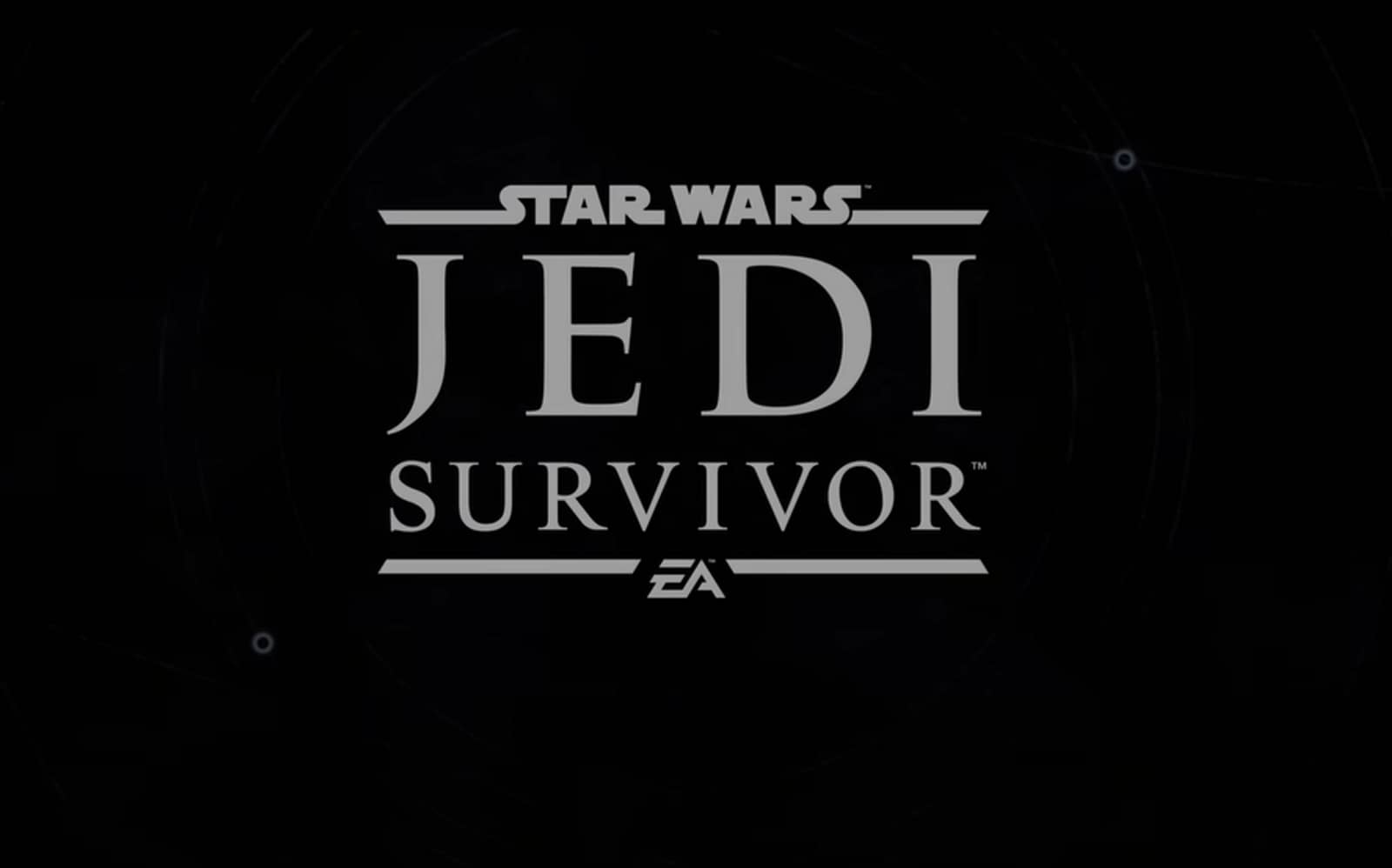As a passionate gamer and Star Wars enthusiast, I understand the excitement and challenge of finding the best laptop for STAR WARS Jedi: Survivor. The game's captivating story, breathtaking visuals, and immersive gameplay demand a powerful machine that can deliver a seamless gaming experience. As such, I've taken it upon myself to review an extensive laptop spreadsheet of recent releases, comparing specs and reviews (both professional and user-generated), to help you narrow down the top laptops for this thrilling adventure.
Being a fan of the game, I know that the ideal laptop for STAR WARS Jedi: Survivor should cater to specific requirements, such as a high-performance GPU for rendering detailed graphics, a fast processor to keep up with intense action sequences, and a high refresh rate display for smooth gameplay. Additionally, having ample RAM and storage capacity is essential for efficient multitasking and quick loading times. Keeping these factors in mind, I've carefully analyzed a multitude of laptops to find the best options that cater to these needs while also considering various price ranges.
While embarking on this quest to find the perfect laptop for STAR WARS Jedi: Survivor, I've taken into account the opinions of fellow gamers from forums, subreddits, and even Twitch streamers who have shared their experiences with different laptops. This comprehensive approach ensures that the laptops I've shortlisted not only meet the technical requirements but also provide an enjoyable and immersive gaming experience for fans of the Star Wars universe. So, whether you're a Padawan starting your journey or a seasoned Jedi Master, rest assured that this guide will help you find the best laptop to accompany you on your path to becoming a Survivor.
Processor Power
The processor market has changed significantly over the past few years, with both Apple and AMD introducing new solutions. Apple's MacBooks now come with the M1, M1 Pro, M1 Max, and M2 system-on-chip modules. These feature excellent single-core performance and battery life. Meanwhile, AMD has managed to take 20% of the CPU market and their 6th generation Ryzen processors are now widely available. Intel, meanwhile, are still on the 12th generation; the 13th-gen is yet to reach laptops. Both Intel and Apple's silicon chips adopt a hybrid performance/efficiency core design, based on big.LITTLE.
Since the game isn't available on Mac, we can eliminate those from the equation. STAR WARS Jedi: Survivor isn't particularly demanding, so even a regular laptop with a mid-range processor should do just fine. However, if you're looking for a gaming laptop – I'd recommend going for an H-series processor such as an i7 or Ryzen 7. These processors have better thermals and power delivery, which means that they can deliver more power to the GPU without overheating.
If you're looking for a competitive edge in PUBG, you'll need a laptop with a high-end processor and GPU combo. When comparing processors, I like to use 3DMark benchmarks since they're relevant to the game's performance. In most cases, 8GB of RAM should be more than enough to get good performance.
Recommendations
At the entry-level, I'd recommend getting a laptop with an Intel i3-1115G4 processor. It should provide more than enough performance for STAR WARS Jedi: Survivor and more demanding games alike.
At the mid-level price range, I'd recommend going for an Intel i5-10310U processor. It will offer superior performance in games and can even be overclocked.
If you have more to spend, you should look for a laptop with an Intel i7-1180G7 processor. It should provide the best performance you can get in gaming laptops.
Powerful Graphics
The laptop Graphics card market has changed significantly in the last few years. While Nvidia continues to dominate the laptop GPU market with their RTX 30 series cards, their new RTX 40 series cards are not yet available on laptops. Furthermore, desktop GPUs are now a lot more power-hungry, so the gap between power-limited notebook graphics and desktop graphics cards has widened. Additionally, Nvidia has discontinued the Max-Q label for its RTX graphics cards, meaning that exact GPU wattage is determined by a laptop manufacturer (OEM). This results in a wide variance in graphics performance even in laptops with the same GPU chipset.
It's important to note that a dedicated graphics card is not necessary for playing STAR WARS Jedi: Survivor. The game can be played without a dedicated GPU, but it will not be as enjoyable. That said, if you're looking for a laptop that will give you an optimal gaming experience, then you'll need to get one with a dedicated graphics card.
Nvidia has a new line of "Advanced" GPUs that are more power-efficient than their regular chips, but they're still not as efficient as AMD's E-series. If you're looking for a laptop with a long battery life, you'll need to make some sacrifices in terms of performance – gaming laptops tend to have shorter battery lives than other laptops due to their higher power requirements.
To decide which graphics chip is the best for gaming laptops, we recommend using 3DMark, an industry standard benchmark with a good spread of tests (graphics, physics, and combined). Here is a table of recommended GPUs for gaming laptops in various price ranges:
| Price Range | Recommended GPU |
|---|---|
| Minimum | GeForce GTX 1650 |
| Recommended | GeForce RTX 3050 |
| High-end | GeForce RTX 2060 |
Jedi RAM Power
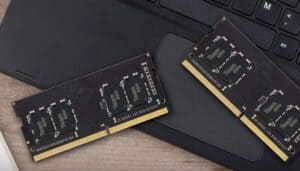
If you're in the market for a laptop to run the latest STAR WARS Jedi: Survivor game, the RAM requirements are not too high. You'll need at least 8 GB of RAM and 16 GB would be ideal if you plan on playing other games as well. Most mid-range laptops come with 16 GB of RAM and high-end models 32 GB or more.
The latest-gen Intel and AMD CPUs support both DDR4 and DDR5 RAM, though DDR5 is still quite expensive and needs some time to mature as a technology. As a result, it's not worth the extra cost in my opinion, especially since DDR5 is only marginally faster than DDR4. Therefore, for now, I'd stick with DDR4.
When considering how much RAM is needed for gaming, the specs you'll want to pay attention to are the CL (CAS latency), the frequency, as well as other specs like latency and ECC (error correcting code). But you don't need to worry about the nitty gritty details if you don't want to; just pay attention to the total amount of RAM in your system.
Here's a quick overview of the amount of RAM you can expect in different price ranges:
| Price Range | RAM (in GB) |
|---|---|
| Low | 4 – 8 |
| Mid-range | 8 – 16 |
| High-end | 16 – 32 |
To sum it up, my recommendation is this: For the best gaming experience, I suggest at least 8 GB of RAM. However, if you want your laptop to be future-proof and you plan on playing other games, aim for 16 GB of RAM. And if money is not an issue and you want the absolute best performance, go for 32 GB of RAM. Of course, if you need more RAM in the future, make sure that your laptop has an accessible slot for an extra module.
6 Best Laptops for STAR WARS Jedi: Survivor
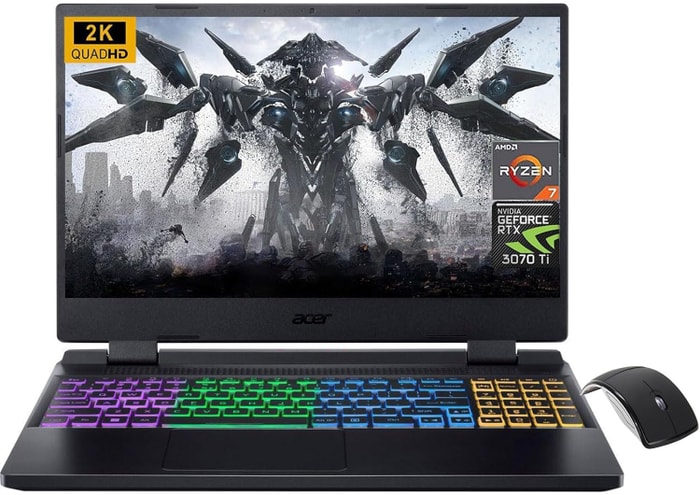 $680
$6801.acer Nitro 5
STAR WARS Jedi: Survivor laptop- Awesome processor (Ryzen 7 6800H)
- Superb graphics card (RTX 3070 Ti)
- Solid display (15.6)
- One of most affordable laptops with an AMD Ryzen 7 processor
- Underwhelming memory amount (32GB)
- No IPS Panel (inferior color reproduction)
Alternatives
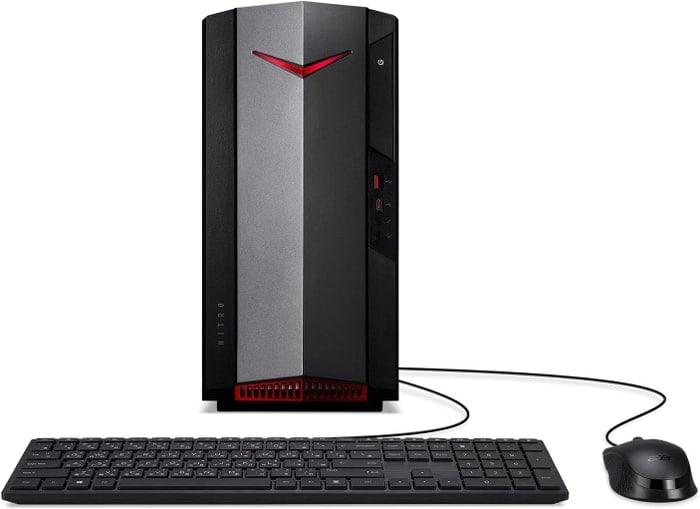
Acer Nitro 50 N50-640-UA91 Desktop
- Terrific memory amount (512GB)
- Garden-variety graphics card (GTX 1650)
- No IPS Panel (worse contrast)
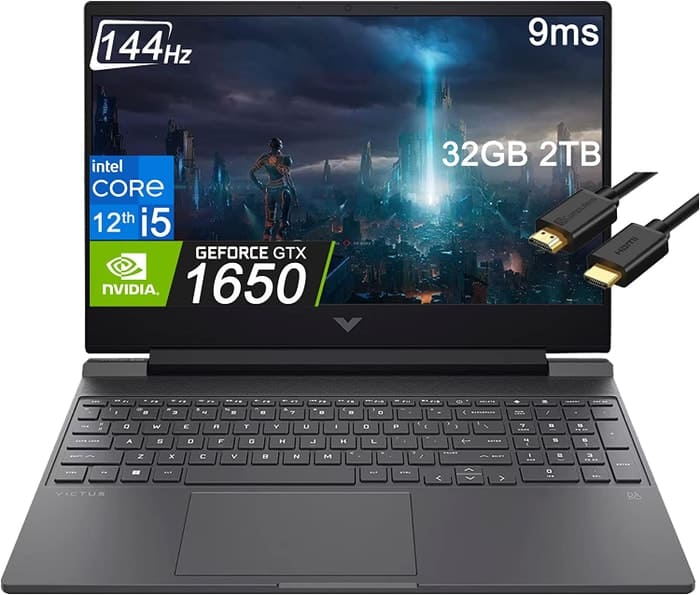
2.HP Victus 15
HP Victus 15: A budget gaming laptop with impressive performance, but lacking in battery life and design.- Excellent price
- Good gaming performance
- Can double as a work laptop
- Bad battery life
- Rather plain design
Summary
The HP Victus 15 offers great value for money with its affordable price and strong gaming performance. It may not have the best battery life or the most visually appealing design, but it delivers where it counts. Prospective buyers outside of the US may face availability issues.
Alternatives
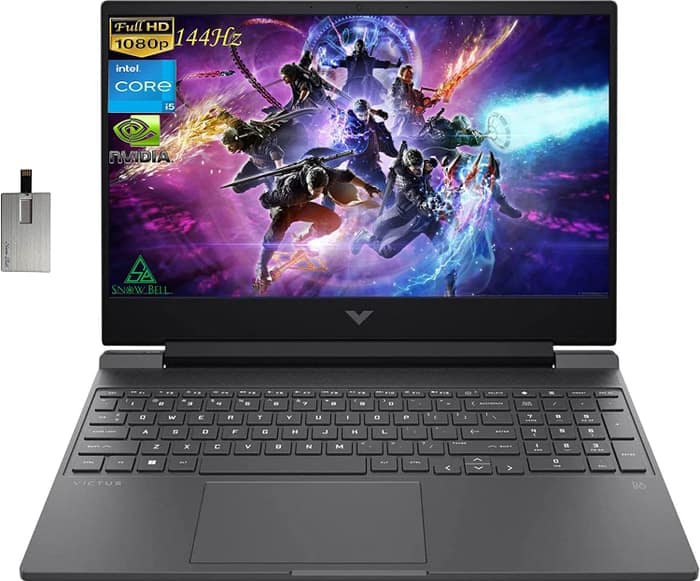
HP Victus
- Delivers smooth gameplay at 1080p.
- Fast SSD.
- No VRR to reduce screen tearing.
- Some performance loss on CPU under load.
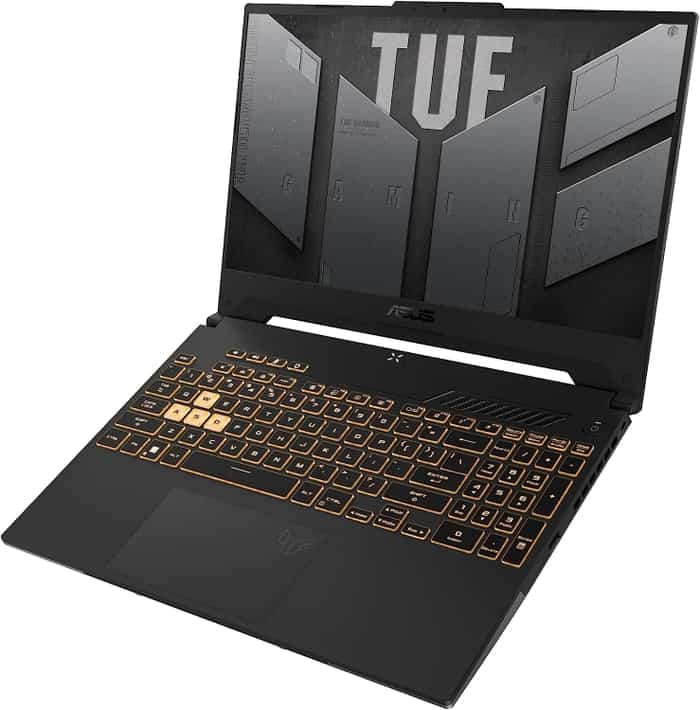
3.ASUS TUF F15 FX507VU-ES53
ASUS TUF F15 FX507VU-ES53: A budget gaming laptop with impressive performance, but lacking in webcam and audio quality.- Superb 1080p gaming performance
- Strong productivity capabilities
- Great price
- Poor webcam, touchpad, and speakers
- Some games appear washed out on display
Summary
The ASUS TUF F15 FX507VU-ES53 is a budget gaming laptop that delivers excellent 1080p gaming performance and strong productivity capabilities. However, its webcam, touchpad, and speakers are subpar, and some games may not look as vibrant on the display.
Alternatives
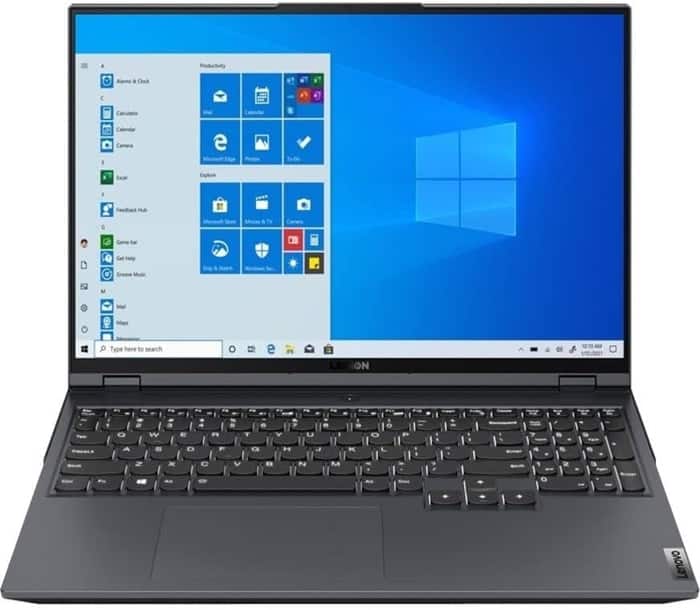
Lenovo Legion 5i Pro 16
- Stylish, sleek form factor
- Gorgeous display
- Webcam quality is poor
- Lacks biometric security options
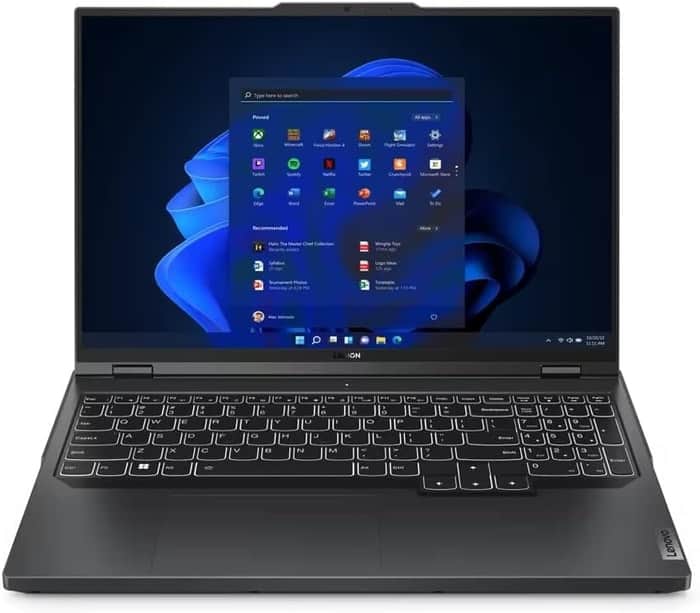
4.Lenovo Legion Pro 5
Lenovo Legion Pro 5: A well-built mid-tier laptop with good performance, but with some limitations.- Good build quality and design
- Good screen and IO
- Competent CPU with three GPU options
- Competitively priced
- No Thunderbolt or biometrics
- Some hotspots while gaming
- Poor speakers
- So-so battery life
Summary
The Lenovo Legion Pro 5 is a well-built mid-tier laptop with a good screen, inputs, and performance. It offers good value for the price, but potential buyers should be aware of the hotspots under sustained loads, limited battery life, and lacking speakers.
Reviews
Alternatives
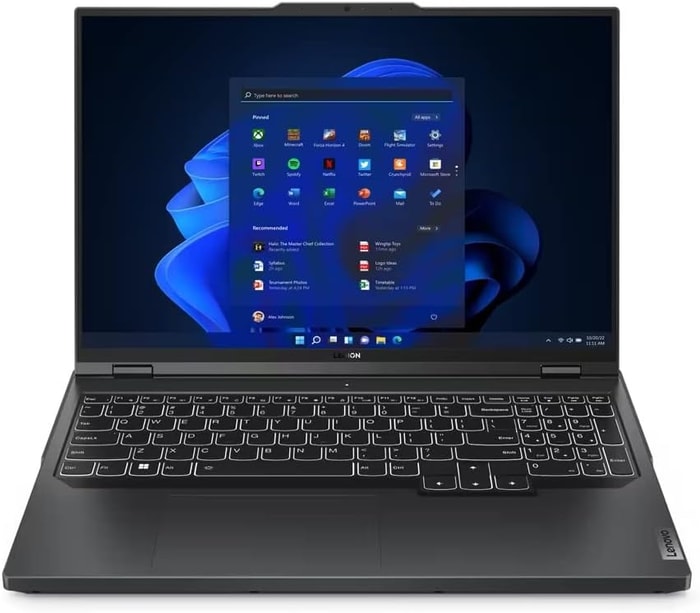 $2,840
$2,840Lenovo Legion Pro 5
- Strong performance for the price
- Quality build and port selection
- Display quality and battery life are just decent
- Bulky and heavy

5.HP Omen 17
HP Omen 17: A high-end gamer with impressive display, expandable memory, and Thunderbolt 4, but falls short in performance and battery life.- QHD display with 165 Hz refresh rate
- Expandable working memory
- Thunderbolt 4 with Power Delivery
- Individual key illumination
- Slightly below-average performance for a RTX 4080
- High noise level
- Clattery case
- Meager battery life
Summary
The HP Omen 17 is a high-end gamer with a QHD display, 165 Hz refresh rate, and expandable memory. It also offers Thunderbolt 4 with Power Delivery and under-volting via software. However, it lacks in performance compared to other RTX 4080 laptops, has a high noise level, clattery case, and meager battery life.
Reviews
Alternatives

HP Omen
- QHD display with 165 Hz
- Advanced Optimus
- Slightly below-average performance for a RTX 4080
- High noise level

6.Dell XPS 17 9720
Dell XPS 17 9720: Excellent 4K display, but graphics performance and cooling could be improved.- Excellent 4K display with AdobeRGB
- High-quality case
- Thunderbolt 4 PCIe 4.0
- Very high system performance
- Lower graphics performance than the predecessor
- Performance not completely stable under combined load
- Not Wi-Fi 6E compatible
- 720p webcam
Summary
The Dell XPS 17 9720 offers an excellent 4K display with AdobeRGB and a high-quality case. It also boasts Thunderbolt 4 and PCIe 4.0 connectivity, along with very high system performance. However, it falls short in graphics performance compared to its predecessor and the cooling system could be better.
Reviews
Alternatives
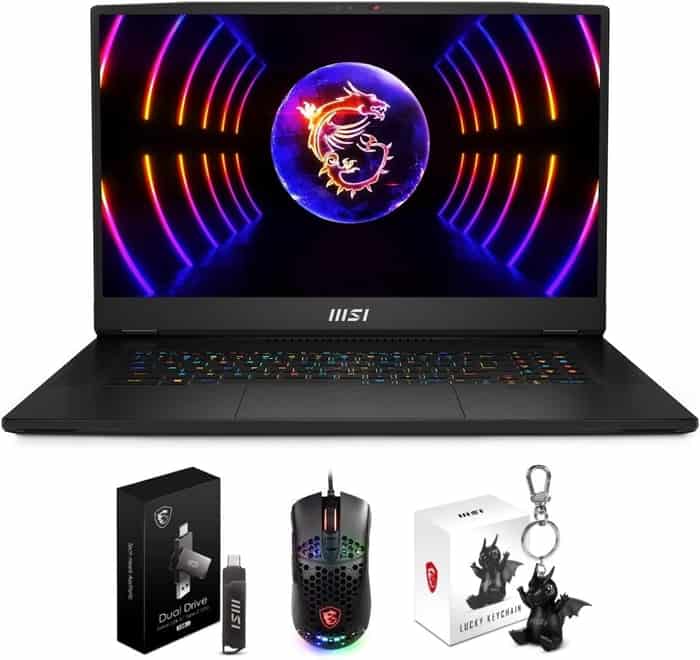
MSI Titan GT77HX 13VI-042US
- Excellent mechanical keyboard
- Class-leading Mini-LED display
- Uninspired design
- Short battery life
FAQ
Q: Can STAR WARS Jedi: Survivor be played on a laptop?
Absolutely! STAR WARS Jedi: Survivor can be played on laptops, as long as they meet the minimum system requirements. So, even if you don't have a powerful gaming rig, you can still embark on your Jedi adventure right from your laptop.
What are the recommended laptop specs for STAR WARS Jedi: Survivor?
For an optimal gaming experience, the recommended laptop specs for STAR WARS Jedi: Survivor include a medium-tier configuration. Aim for at least 16 GB of memory, a GeForce RTX 3050 graphics card, and an i5-10310U or equivalent processor. With these specs, you'll be able to enjoy the game with smooth performance and stunning visuals.
What laptops can run STAR WARS Jedi: Survivor?
A wide range of laptops can run STAR WARS Jedi: Survivor, depending on your budget and desired gaming experience. From budget-friendly options to high-end gaming powerhouses, here are some laptops that can handle the game:
- Acer Predator Helios 16 Ph16-71 Ph16-71-71av ($60)
- HP Victus ($890)
- ASUS TUF F15 FX507ZM-ES74 (RECOMMENDATIONS_ALL,300)
- ASUS ROG Strix Scar ($2,310)
- Lenovo Legion Pro 7i 16 ($3,390)
- Dell XPS 17 9720 ($5,600)
Is a gaming laptop necessary for STAR WARS Jedi: Survivor?
While a gaming laptop will offer the best gaming performance and graphical fidelity for STAR WARS Jedi: Survivor, it's not absolutely necessary. If you have a laptop that meets the minimum system requirements, you'll still be able to enjoy the game. Just keep in mind that lower-end laptops might struggle with running the game smoothly or at higher graphical settings.
Can I play STAR WARS Jedi: Survivor on a budget laptop?
Yes, you can play STAR WARS Jedi: Survivor on a budget laptop, but you might have to make some compromises. Budget laptops generally have lower-tier components, so you may experience reduced performance and have to play the game at lower graphical settings. However, with the right optimizations and tweaks, you can still have an enjoyable gaming experience on a budget laptop.
What graphics card is needed for STAR WARS Jedi: Survivor?
To meet the minimum system requirements for STAR WARS Jedi: Survivor, you'll need at least a GeForce GTX 1650 graphics card. This entry-level GPU will provide decent performance and allow you to play the game smoothly at lower graphical settings. For a better gaming experience with higher graphics quality, aim for a GeForce RTX 3050 or above.
Is a high refresh rate display important for STAR WARS Jedi: Survivor?
While a high refresh rate display is not crucial for playing STAR WARS Jedi: Survivor, it can enhance your gaming experience by providing smoother and more fluid visuals. If you have the budget, consider investing in a laptop with a display that offers a high refresh rate of 120Hz or higher. However, if you're on a tight budget, a standard 60Hz display will still allow you to enjoy the game.
How much RAM is required to run STAR WARS Jedi: Survivor on a laptop?
To meet the minimum system requirements for STAR WARS Jedi: Survivor, you'll need at least 8 GB of RAM. However, for a smoother and more seamless gaming experience, we recommend opting for a laptop with 16 GB of RAM. This will allow the game to run more efficiently and prevent any performance bottlenecks caused by insufficient memory.
Can I play STAR WARS Jedi: Survivor on an Ultrabook?
It is possible to play STAR WARS Jedi: Survivor on an Ultrabook, but you may need to make some sacrifices in terms of performance and graphical quality. Ultrabooks are known for their slim and lightweight design, which often comes at the cost of reduced gaming capabilities. However, if your Ultrabook meets the minimum system requirements, you should still be able to enjoy the game, albeit with potentially lower graphics settings and frame rates.
What laptops are best for STAR WARS Jedi: Survivor?
The best laptops for STAR WARS Jedi: Survivor are those that meet or exceed the recommended system requirements. To ensure a smooth gaming experience with high-quality graphics, we recommend considering laptops such as the ASUS TUF F15 FX507ZM-ES74, ASUS ROG Strix Scar, Lenovo Legion Pro 7i 16, or Dell XPS 17 9720. These laptops offer powerful components, excellent cooling, and high-quality displays, making them ideal for immersive gaming sessions in the Star Wars universe.
Table of the Best Laptops for STAR WARS Jedi: Survivor
| Laptop | Price (approx) |
| acer Nitro 5 | $680 |
| HP Victus 15 | $880 |
| ASUS TUF F15 FX507VU-ES53 | $1,100 |
| Lenovo Legion Pro 5 | $2,630 |
| HP Omen 17 | $4,290 |
| Dell XPS 17 9720 | $5,600 |

